Last updated on March 22, 2024

Anje Falkenrath | Illustration by Cynthia Sheppard
We’re back on Innistrad for the third time in ten years. This is absolutely not a complaint; I’ve been a huge fan of the two earlier sets on this plane. I love gothic horror, and I especially love the way it’s been handled in Midnight Hunt through artistic choices as well as card design and mechanics.
There are a lot of mechanics that fit into this gothic horror setting really well. Transforming cards to introduce werewolves into the game is peak design in my opinion. But there are plenty of other abilities that fit in really well.
Undying and delirium set this world as full of horrors from beyond the grave where people’s sanities are one bad day away from snapping. And there’s another mechanic that plays into the sanity of the characters.
That’s madness, the ability I’m gonna be talking about today.
How Does Madness Work?
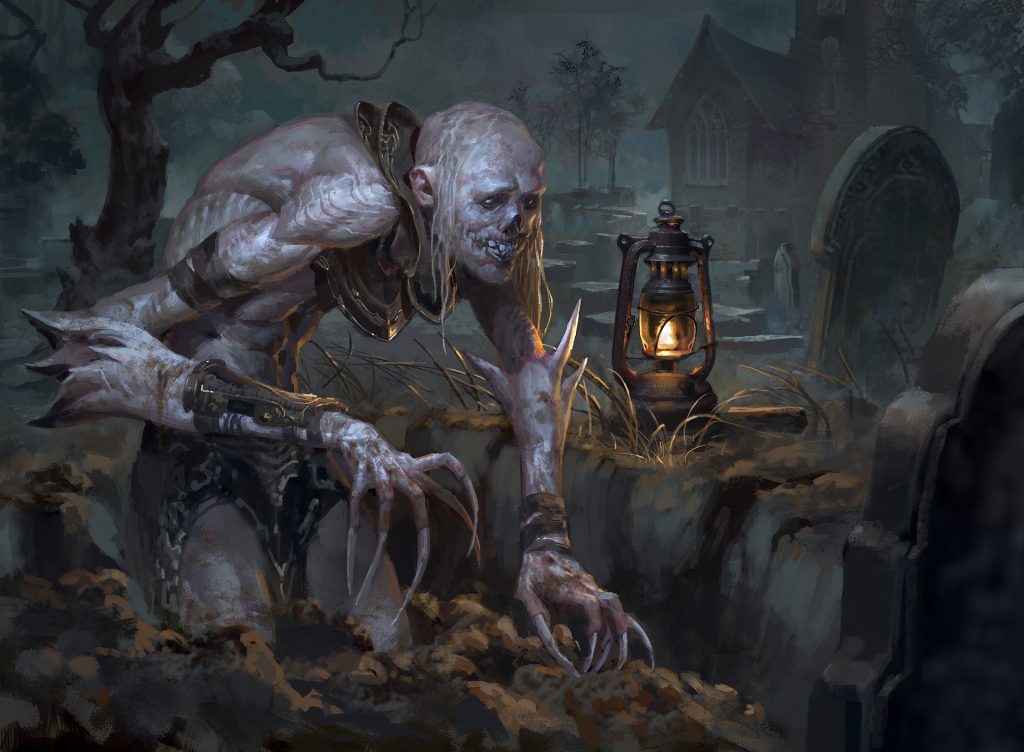
Grave Scrabbler | Illustration by Livia Prima
Madness is an ability that lets you cast a card for an alternative cost as long as it’s being discarded. The moment you discard a card with madness, its ability triggers. Then the card is put into exile, where you must choose to either send it to the graveyard or pay its madness cost and cast it. The madness cost is usually different from the casting cost as well.
Some cards have a lower madness cost that incentivizes you to build your deck around having ways to discard your own cards so you can then cast them. Some examples of this are cards like Alms of the Vein or Alchemist's Greeting, which aren’t really good cards for their original costs. But playing them for their madness costs makes them way more viable.
Some other cards have a madness cost higher than their regular one with some bonus. Two examples of this are Welcome to the Fold and Avacyn's Judgment.
Even though cards with madness are discarded into exile, any card that affects discarded cards specifically like Shadow of the Grave recognizes them as being discarded if you choose to put the madness card into your graveyard instead of casting it.
A History of Madness
I love when I get to write titles that sound so absurdly edgy.
Most players associate the madness mechanic with Innistrad and its vampires. More specifically, the mechanic showed up on a lot of vampires and vampire-related cards in Shadows Over Innistrad. I even used to think this was the first time that the ability was showing up, but I was very wrong.
It turns out that madness has been around for a very long time. Its very first appearance was way back in Torment from the Odyssey block in 2002. It didn’t really make a lot of appearances, but the mechanic at least has some history in the game.
This first mechanic was represented by two cycles in the set. One of five common madness cards and another of five uncommon ones. Even if these aren’t some of the best madness cards out there, they still packed some punch. Cards like Fiery Temper and Psychotic Haze can be really useful in discard-heavy decks.

The mechanic showed up again in the Time Spiral block in 2006. Madness showed up in cards from all three sets in the block this time. One of the best cards from these sets is Grave Scrabbler, which still sees a fair amount of play in formats like Commander to this day.
With its next appearance in the Shadows Over Innistrad block in 2016, the mechanic saw a big change in how it worked. Originally, when a card with madness was discarded you first had to choose whether to put it into exile or to let it go straight to the graveyard.
But that rule was changed in Shadows Over Innistrad so that all cards with madness had to go into exile. There was also the clarification that even though all cards with madness are discarded into exile, it would go into the graveyard and still be considered discarded from your hand if you didn’t choose to play it. Madness was also tightly associated with Innistrad’s vampires during this block.
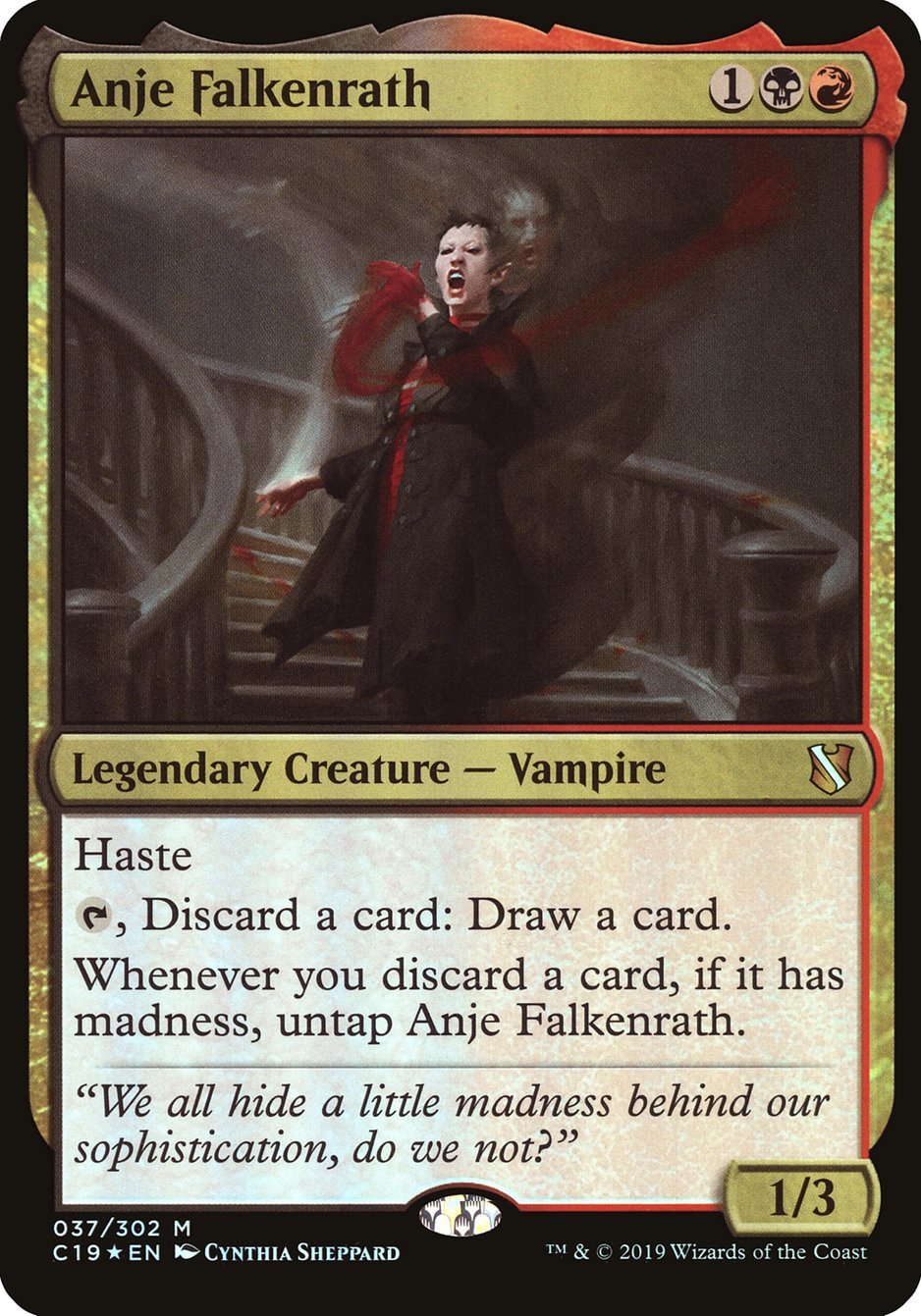
Eventually the mechanic would show up again in Commander 2019’s Merciless Rage precon. It was specifically commandeered by Anje Falkenrath, a vampire from Innistrad. This further cemented the connection between the vampires of Innistrad and the mechanic itself.
The final appearance of madness was in Modern Horizons 2. It showed up exclusively in red and black and worked really well with… um…
Give me a second here…
Asmoranomardicadaistinaculdacar (nailed it!) and The Underworld Cookbook. What a mouthful. Anyone would go mad if they had to say that name over and over again.
The Future of Madness
I think I can confidently say this is definitely not the last we’ve seen of this mechanic. I’d absolutely love for it to show up again sometime soon.
Considering Emrakul was locked up in the moon and her influence from the plane is gone, there’s a big chance that madness won’t be returning since the source of the madness is gone. But I guess we’ll have to wait and see.
Is Madness Evergreen?
The term “evergreen” refers to keywords that can be used in any set. Madness is definitely not that. The appearance of madness is pretty occasional and it tends to exist around a specific theme in most cases. It can’t really be used in any set for no reason.
Is Madness at Instant or Sorcery Speed?
One of madness’ strengths is that it’s an ability that can be used at instant speed. This means that as long as you have a way to discard cards at any given time, you can cast sorceries, enchantments, and creatures at instant speed.
Does Madness Ignore Timing?
Madness makes it so that any card that has the ability can be cast anytime it’s discarded. This means that you can play any card type with madness at any time as long as you’ve discarded it first.
Can You Play Madness Creatures at Instant Speed?
Any card with madness can be played at instant speed. All you need is a way to discard it from your hand, and there’s plenty of cards to help with that.
Can You Counter Madness?
Whenever a card is cast for its madness cost it’s still being cast, so it can be interacted with in any of the same ways that a card being cast in a regular way can. This includes countering them.
Does Paying Madness Still Count as Discard?
In most cases, yes. If you play something like Faithless Looting, discard two cards with madness and cast them, then for the purposes of that card you have discarded them. You don’t need to discard any other cards.
But for a card like Shadow of the Grave, if you previously discarded an instant but chose to play it with madness and only then did it go into your graveyard, it doesn’t count as discarded for the effect.
Is Madness Cast from Exile?
A card with madness gets discarded into exile. Once there you choose to either cast it or send it to the graveyard. This means that all cards with madness are cast from exile, making the mechanic really good for that Prosper, Tome-Bound deck.
Is Madness a Triggered Ability or an Activated Ability?
Madness is a triggered ability. You can only play it when the right trigger (discarding the card from your hand) happens.
What's the Mana Value of a Madness Card?
Madness is an ability that allows you to cast the card by an alternative cost, but that doesn’t change the card's actual mana value. The “original” casting cost is always the mana value.
Can You Pay Madness When a Card is Milled?
Madness only triggers when a card is discarded from your hand. Milling refers to putting cards from the deck into the graveyard, so they’re not discarded and don’t trigger madness.
Madness Card Gallery
Torment

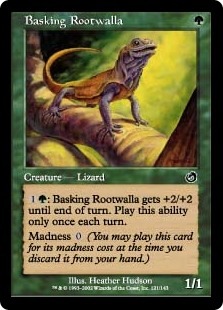

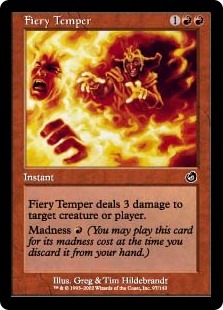
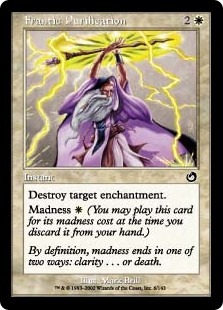
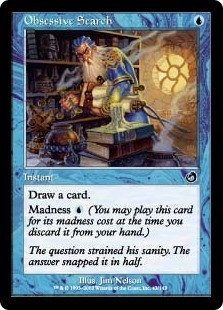
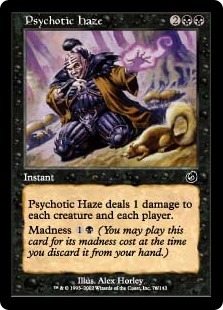
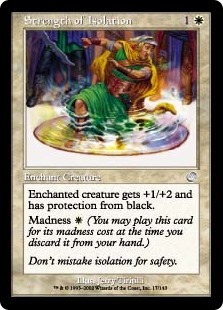
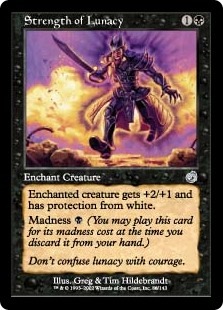

- Arrogant Wurm
- Basking Rootwalla
- Circular Logic
- Fiery Temper
- Frantic Purification
- Obsessive Search
- Psychotic Haze
- Strength of Isolation
- Strength of Lunacy
- Violent Eruption
Time Spiral
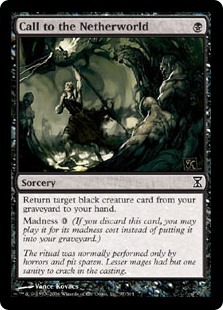
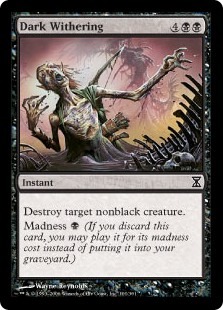


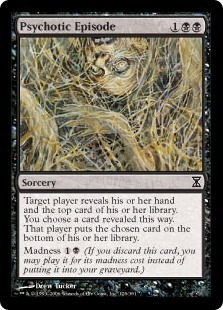
Planar Chaos
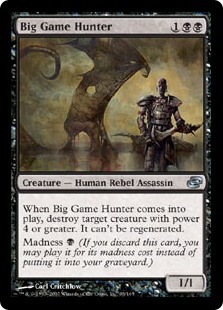
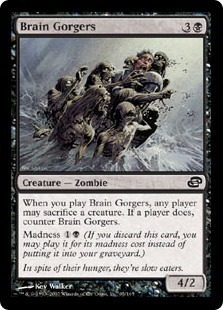
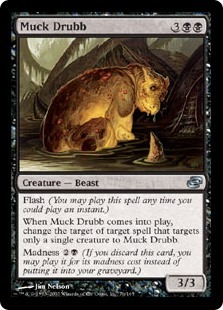
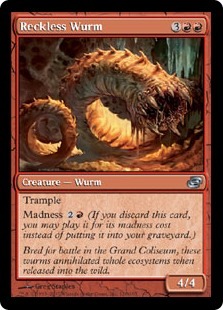
Future Sight



Shadows Over Innistrad
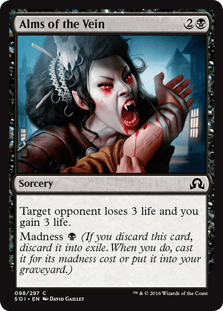
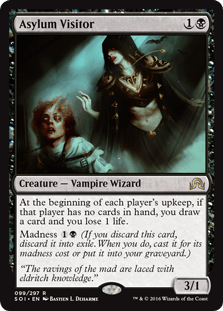
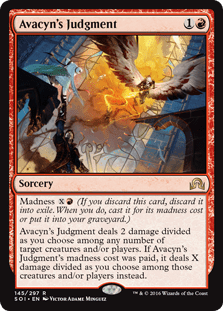
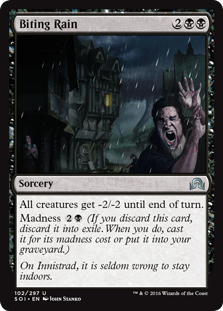
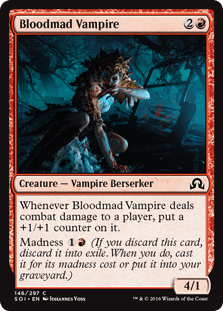
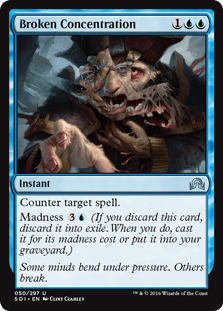
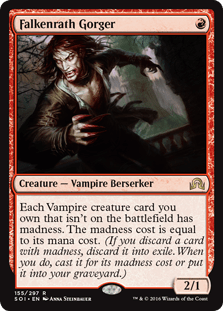
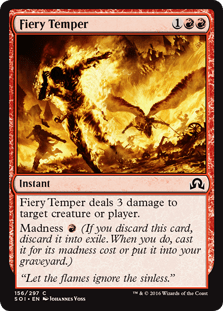

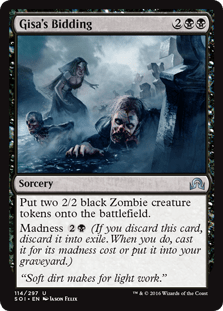



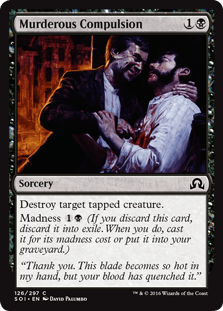
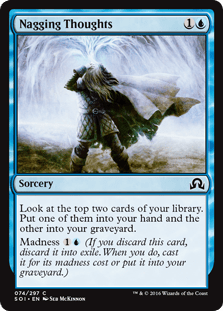
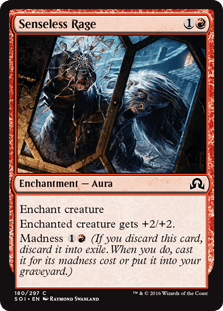
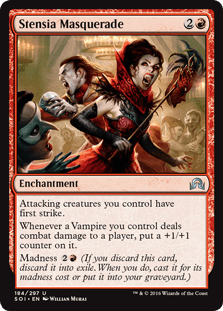
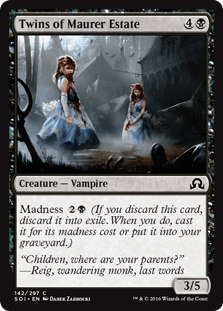

- Alms of the Vein
- Asylum Visitor
- Avacyn's Judgment
- Biting Rain
- Bloodmad Vampire
- Broken Concentration
- Falkenrath Gorger
- Fiery Temper
- From Under the Floorboards
- Gisa's Bidding
- Incorrigible Youths
- Just the Wind
- Malevolent Whispers
- Murderous Compulsion
- Nagging Thoughts
- Senseless Rage
- Stensia Masquerade
- Twins of Maurer Estate
- Welcome to the Fold
Eldritch Moon
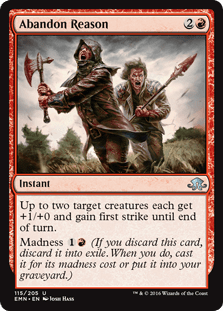
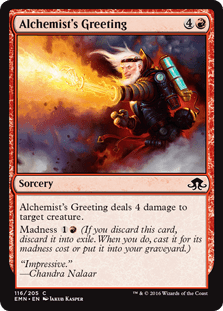
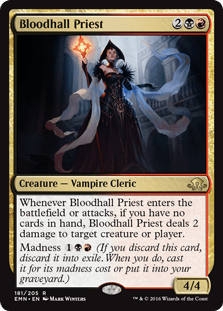
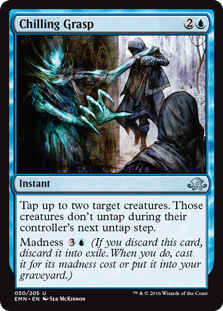
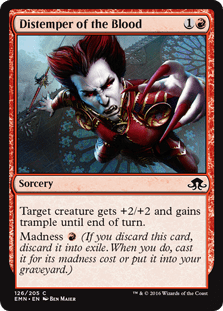


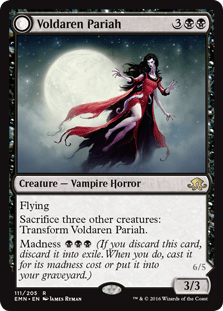
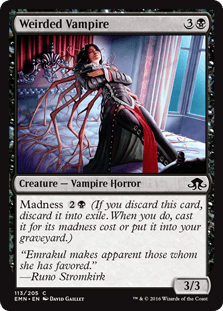
- Abandon Reason
- Alchemist's Greeting
- Bloodhall Priest
- Chilling Grasp
- Distemper of the Blood
- Insatiable Gorgers
- Stromkirk Occultist
- Voldaren Pariah
- Weirded Vampire
Commander 2019
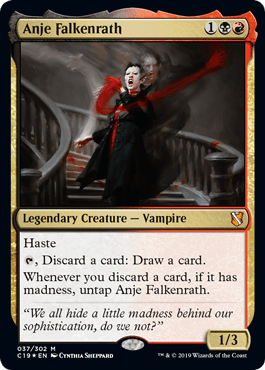
Modern Horizons 2
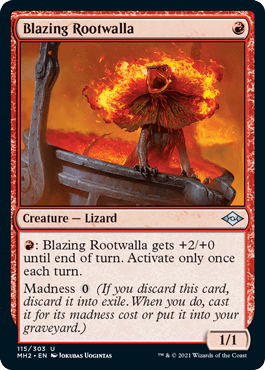
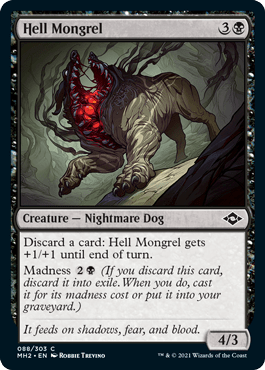
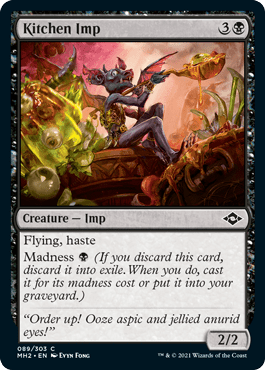
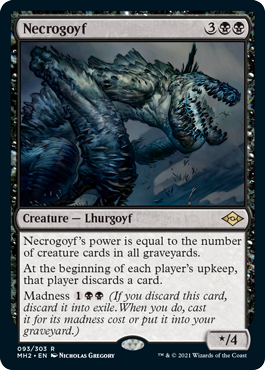
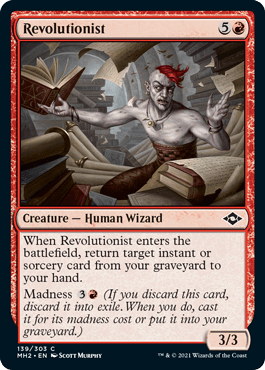
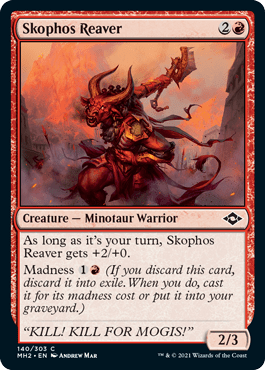
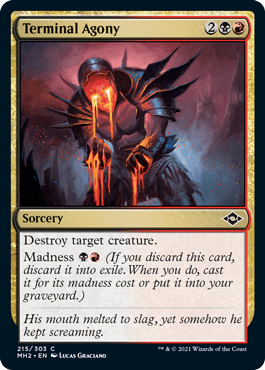
Commander Legends: Battle for Baldur's Gate
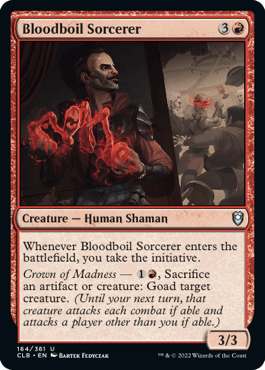
Crimson Vow: Commander
March of the Machine: The Aftermath
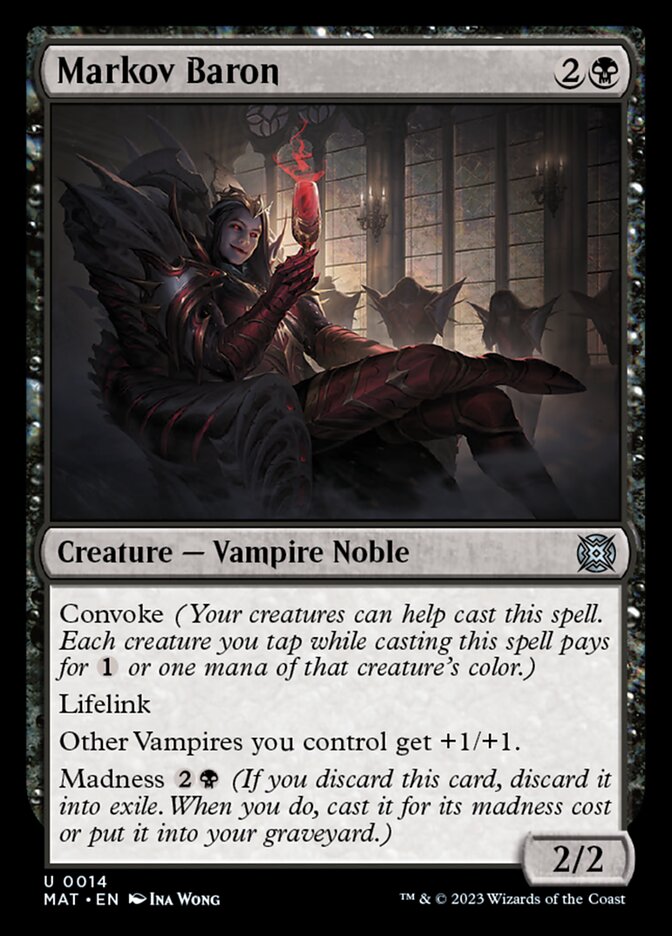
Best Madness Cards
So I gave you a list of all the cards with the madness ability. But which of them are a must-have in any deck that plays the ability?
Big Game Hunter
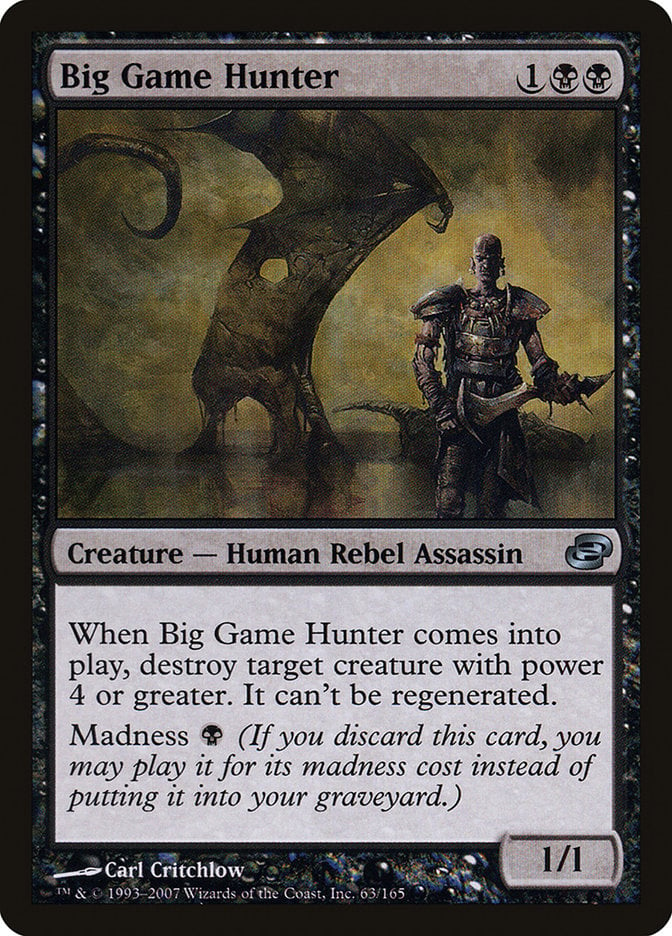
This card is particularly good for Commander where large creatures are all over the place. For Big Game Hunter’s madness cost you can cast a small 1/1 blocker, but most importantly you can also get rid of one of those big, mean creatures your opponents have on their field. No one wants to have their The Ur-Dragon taken down by a 1/1 cast by for a single .
Call to the Netherworld
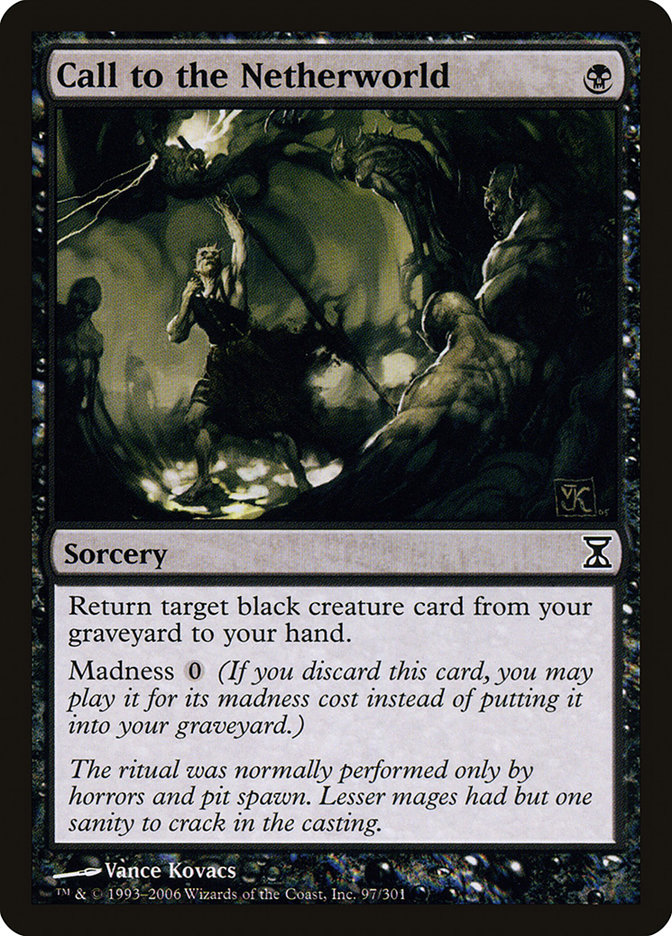
So your Big Game Hunter came into play, you used it to kill a large creature and then block, so it’s now in the graveyard. No need to fear. Call to the Netherworld has a very limited effect since it only lets you take a black creature from your graveyard and bring it back to your hand.
But black is madness’ most prominent color and there’s plenty of black creatures that are very useful to bring back. And this card’s madness cost is zero to top it off, so you can take advantage of it on turns where you need to discard but you don’t have enough mana to pay other madness costs.
Asylum Visitor

Asylum Visitor doesn’t exactly shine for its madness cost since it’s the same as the casting cost. But it does shine in madness-centric decks.
Any deck with this ability as its main focus will have a fair amount of discard enablers. That means that you’re more than likely to have no cards in your hand most of the time. In that case, this card allows you to draw extra cards and keep some card advantage. Bonus points considering you’ll also gain card advantage if your opponent has no cards in their hand.
Gibbering Descent
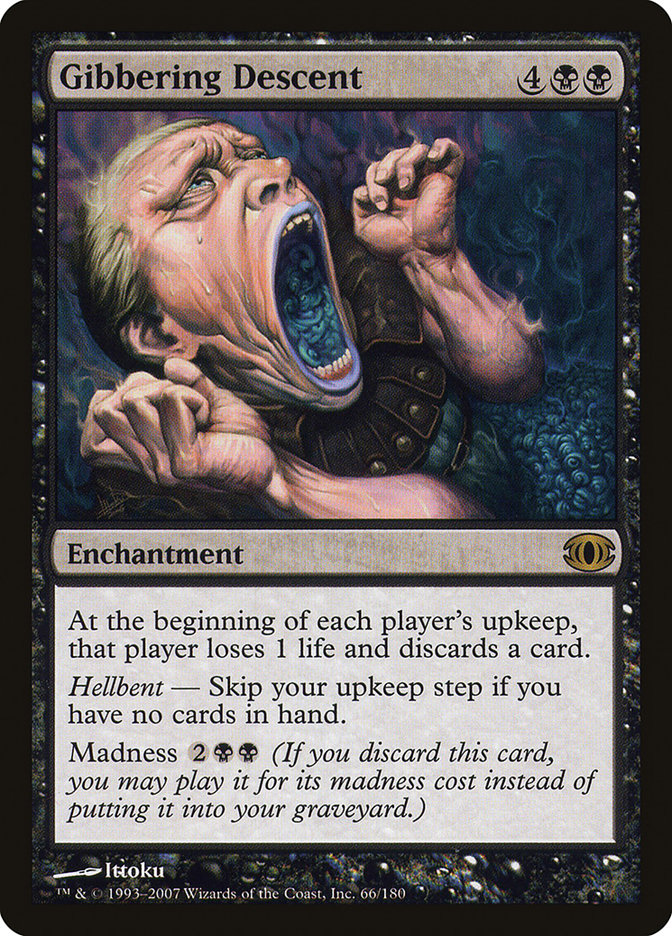
And speaking of having no cards in your hand. The first time I looked at Gibbering Descent I didn’t think much of it. But paying closer attention to it, it’s an incredible card in any madness-centric deck.
Skipping your upkeep doesn’t mean skipping your draw and untap steps. So in a deck where you’re likely to have no cards in your hand by the time your upkeep comes, you’re imposing a pretty annoying punishment on your opponent every single turn.
Grave Scrabbler

I think Grave Scrabbler goes all the way into absurd territory. Giving a card a madness cost that’s half of its original cost and then rewarding you even further for paying that cost is absolutely crazy. No pun intended.
But in all seriousness, playing this card for madness costs you half of its normal cost and you get to return a creature from your graveyard to your hand.
Best Madness Enablers
I’ve talked a lot about how you’ll need something that lets you discard cards from your hand with relative ease for most madness cards. So let’s take a quick look at some cards that do exactly that.
Anje Falkenrath

Let’s start with the obvious choice. There’s an entire precon built around Anje Falkenrath and madness. This card’s entire existence revolves around madness and using it to your advantage. The best part about Anje is that even you still get rewarded if you’re playing the more basic madness cards like Senseless Rage that don’t have a different cost or extra effects.
By tapping Anje and discarding a card, you’re already drawing a card. In a madness-heavy deck this means casting your card plus drawing a card, netting you some sweet card advantage. But it doesn’t end there since this card’s second effect makes it so that if the card you discarded had madness, you get to untap it.
So for every card with madness that you want to cast, you can essentially use Anje as an enabler and play it for its madness cost and draw another card basically for free.
Call the Bloodline
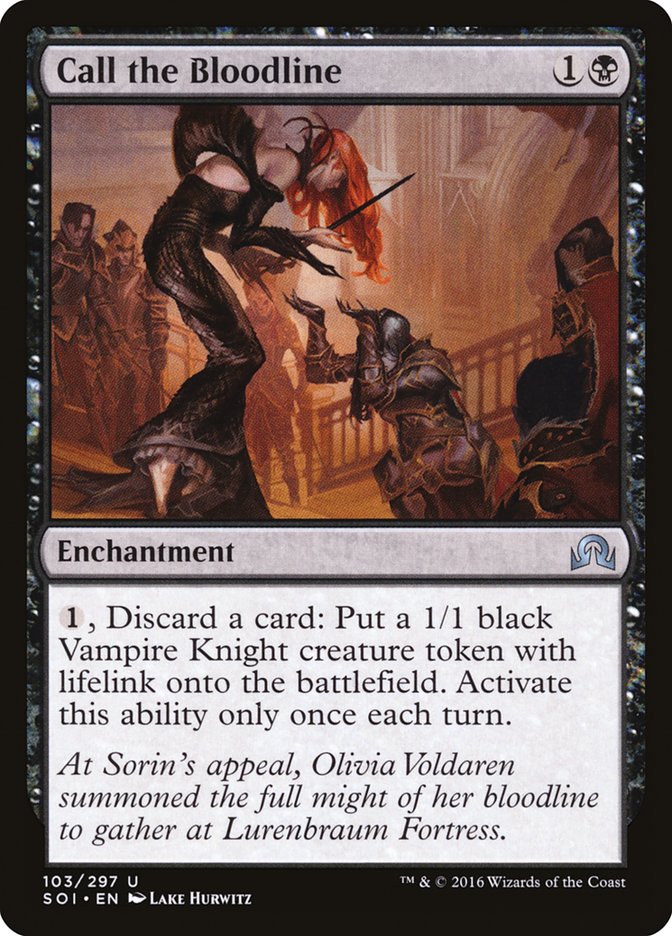
Having to pay for each discard means that mana costs will eventually start to pile up so you may not be able to play all of your madness cards with Call the Bloodline. But you still get a 1/1 vampire token with lifelink, so you get small blockers against creatures without trample. You can even build a nice token army to overwhelm your opponent and gain a ton of life in the process.
The Royal Scions + Sarkhan, Fireblood
Something you need to consider about most madness enablers is that they’re cards meant to be a part of other decks. They’ll usually have a lot of advantages to discarding a card.
Planeswalkers like Sarkhan, Fireblood or The Royal Scions get loyalty counters, let you discard a card, and draw a card. In any other deck, discarding a card would be a huge drawback, but planeswalkers that have this kind of effect are pure gain since you’re gonna be playing that card anyway.
The Underworld Cookbook + Asmoranomardicadaistinaculdacar
I put these two together because they’re clearly meant to work as a combo. You can use The Underworld Cookbook to play one of your cards with madness which gets you a chance to play Asmoranomardicadaistinaculdacar and a Food token. Then you can use two of those Food tokens to get rid of almost any big creature by having it deal six damage to itself.
It’s a little convoluted and strange but that’s pretty on-theme for Rakdos cards and the idea of madness. Plus it forces you to say Asmoranomardicadaistinaculdacar every time you use its effect which makes any game a lot more fun.
Faithless Looting (and more)
Faithless Looting, Dismissive Pyromancer, Unexpected Windfall, Windfall, and many other cards let you discard in order to draw one or more. Usually for a cheap cost. Keeping these at hand in a madness deck can help you cast plenty of your cards while also drawing new ones, keeping the cycle going.
Can I Play With Madness
Commander (1)
Creatures (24)
Anje's Ravager
Archfiend of Ifnir
Archfiend of Spite
Asmoranomardicadaistinaculdacar
Asylum Visitor
Blazing Rootwalla
Bloodhall Priest
Bone Miser
Chainer, Nightmare Adept
Conspiracy Theorist
Doomed Necromancer
Glint-Horn Buccaneer
Grave Scrabbler
Kitchen Imp
Magus of the Wheel
Muck Drubb
Necrogoyf
Olivia, Mobilized for War
Overseer of the Damned
Prosper, Tome-Bound
Solemn Simulacrum
Squee, Goblin Nabob
Stromkirk Occultist
Surly Badgersaur
Instants (9)
Abrade
Chaos Warp
Chef's Kiss
Fiery Temper
Mausoleum Secrets
Rakdos Charm
Terminate
Thrill of Possibility
Tibalt's Trickery
Sorceries (15)
Avacyn's Judgment
Beacon of Unrest
Biting Rain
Blasphemous Act
Boneyard Parley
Cathartic Reunion
Diabolic Tutor
Faithless Looting
From Under the Floorboards
Gamble
Nightmare Unmaking
Restless Dreams
Terminal Agony
Vandalblast
Victimize
Enchantments (3)
Call the Bloodline
Faith of the Devoted
Zombie Infestation
Artifacts (8)
Arcane Signet
Armillary Sphere
Grimoire of the Dead
Rakdos Signet
Sol Ring
Swiftfoot Boots
Talisman of Indulgence
The Underworld Cookbook
Lands (40)
Barren Moor
Bojuka Bog
Canyon Slough
Command Tower
Drownyard Temple
Forgotten Cave
Geier Reach Sanitarium
Mortuary Mire
Mountain x13
Rakdos Carnarium
Rix Maadi, Dungeon Palace
Smoldering Marsh
Swamp x14
Temple of Malice
Witch's Cottage
I’ve wanted to play a madness deck since Anje Falkenrath’s precon came out. I never really got around to it, but I decided to brew up a budget madness deck to share with you. It’s clearly not a competitive deck and some of the cards I talked about here may be missing because of their elevated price tags, but it’s a good start to get some ideas on how to brew your own madness decks.
The main idea behind this list is to get your commander into play as soon as possible and use it to cast all of your madness cards while drawing yourself new cards. Some of these cards make you discard your entire hand so there’s a fair amount of recursion to dig through your graveyard and recover cards if you lose anything you absolutely need to cast.
Wrap Up

Asylum Visitor | Illustration by Bastien L. Deharme
I really like madness. I think it’s a super fun mechanic that takes advantage of abilities that would usually harm you while managing to not be too broken to become unfun. Not to mention that it’s strongest in Rakdos which is one of my favorite combinations of colors.
But what do you think? Have you played against madness decks? Do you have madness decks of your own? Do you think they’re fun or do you hate them? Feel free to comment on this in the comments below! And don’t forget to check out our blog and follow us on Twitter for more articles like this one.
That’s all from me for now. Have a nice week, and I’ll see you in the next one!
Follow Draftsim for awesome articles and set updates:
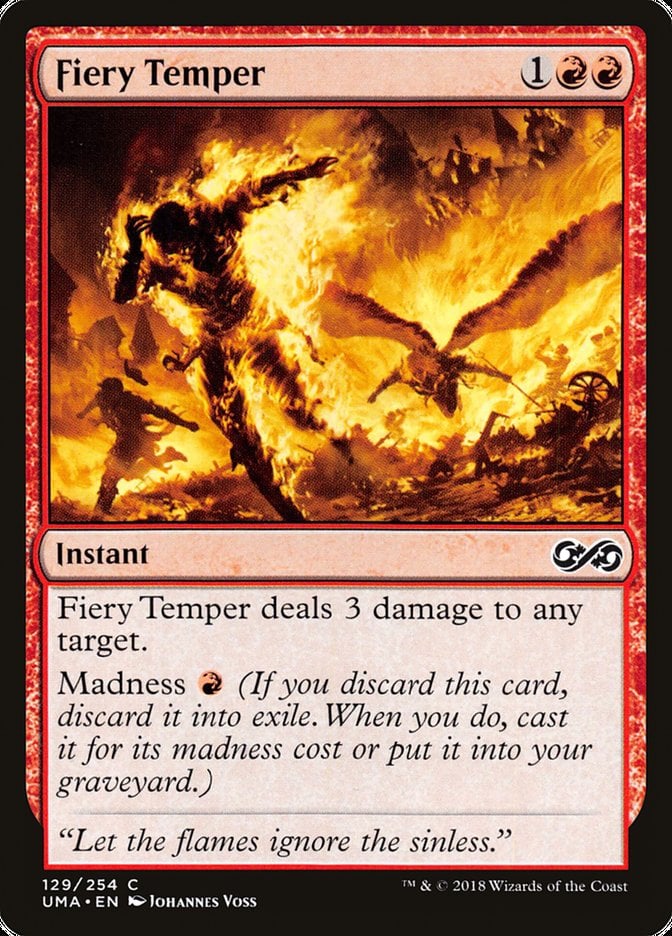
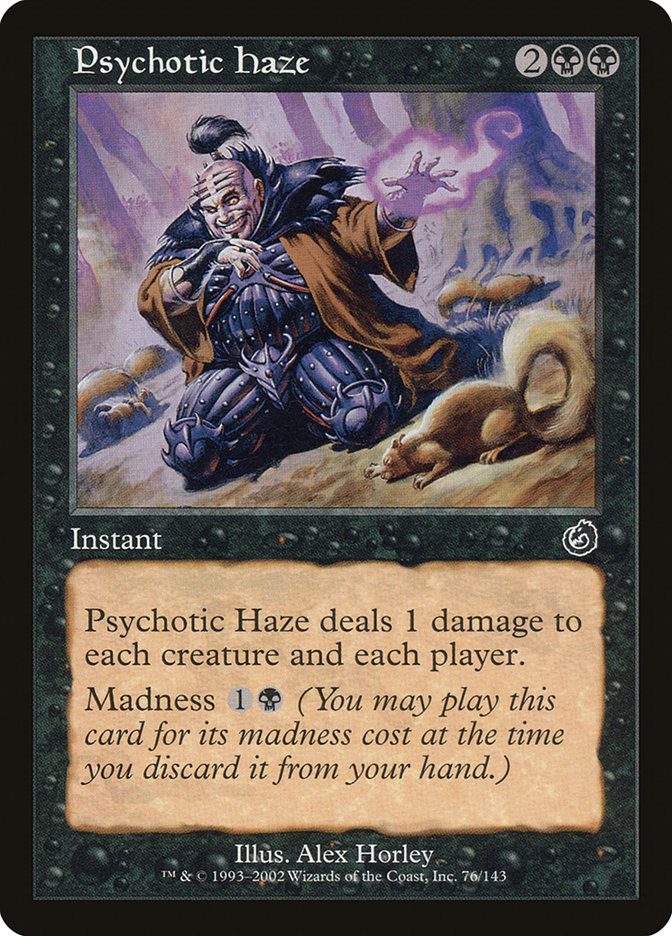
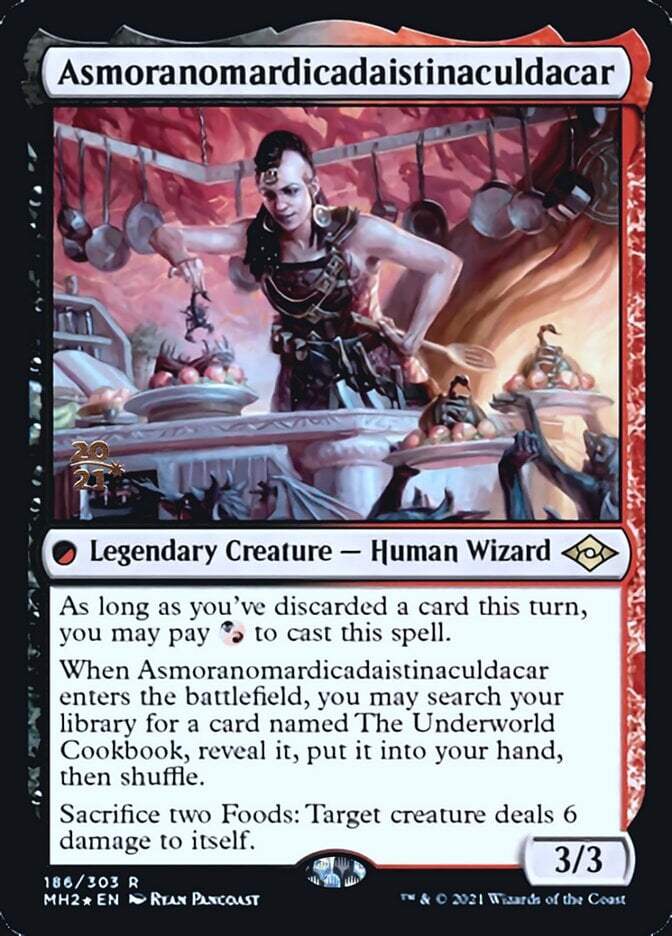
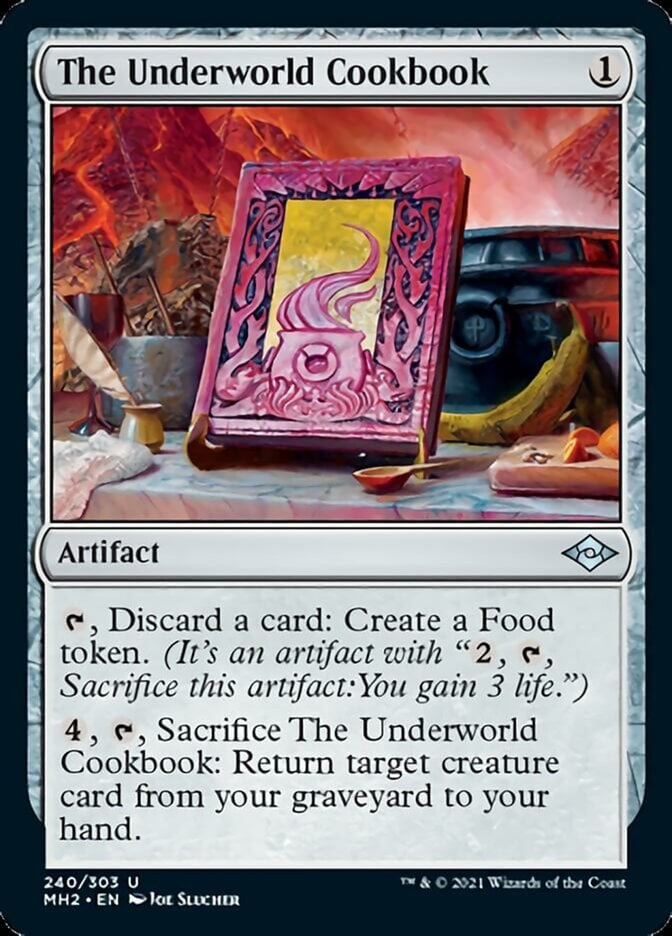
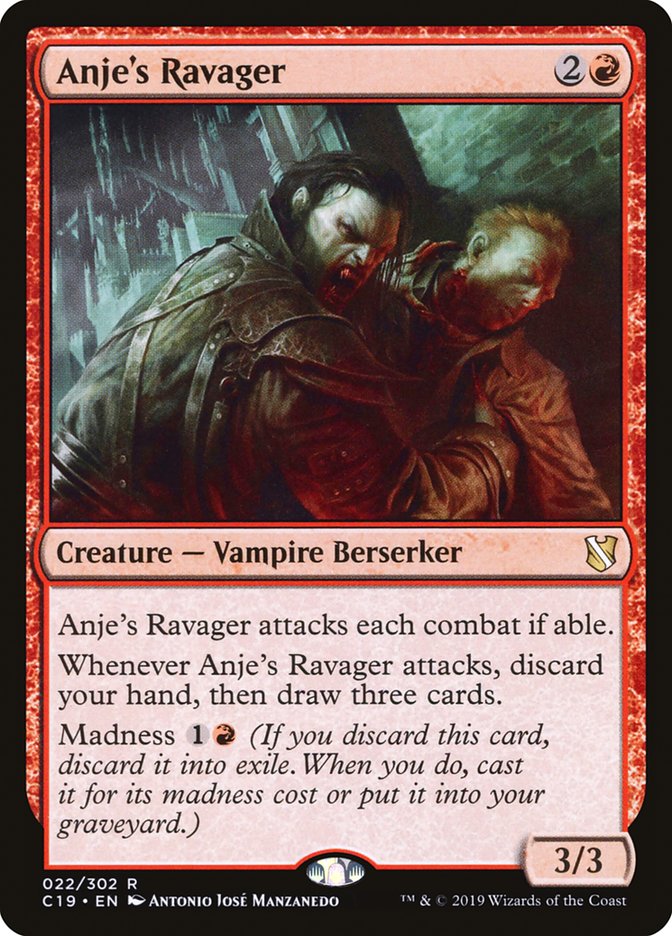
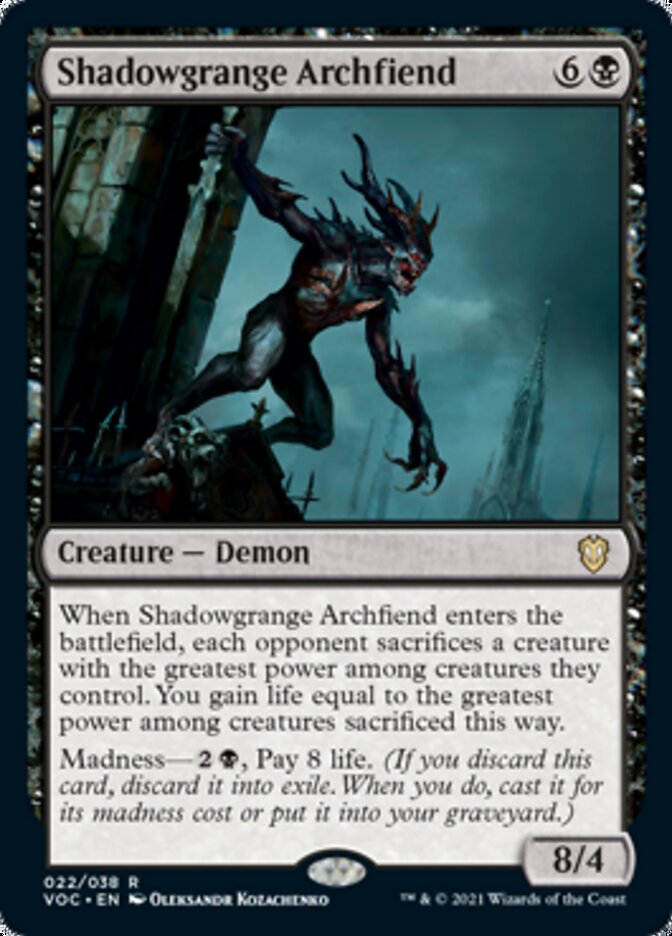

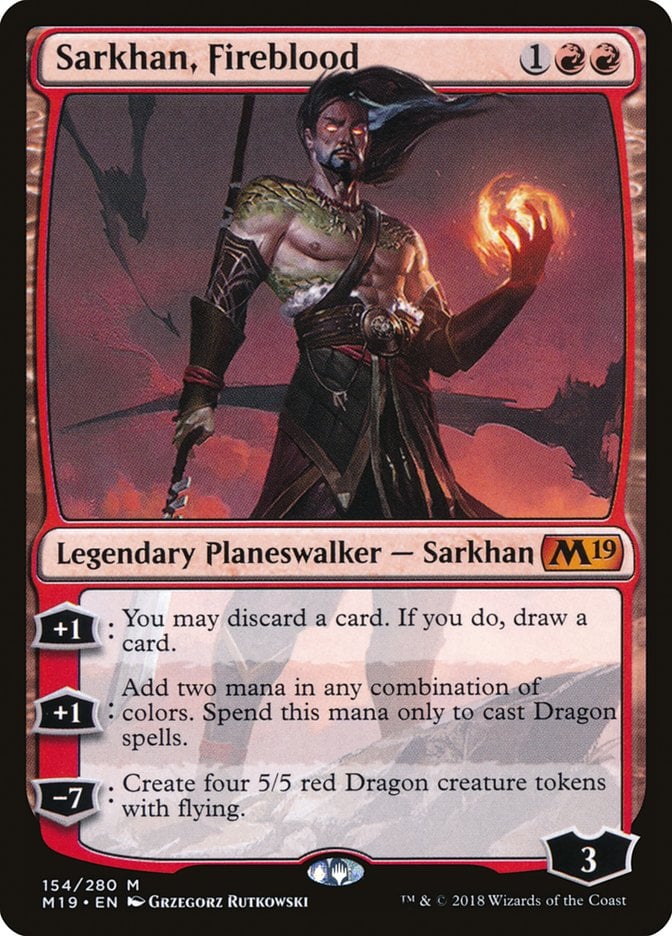
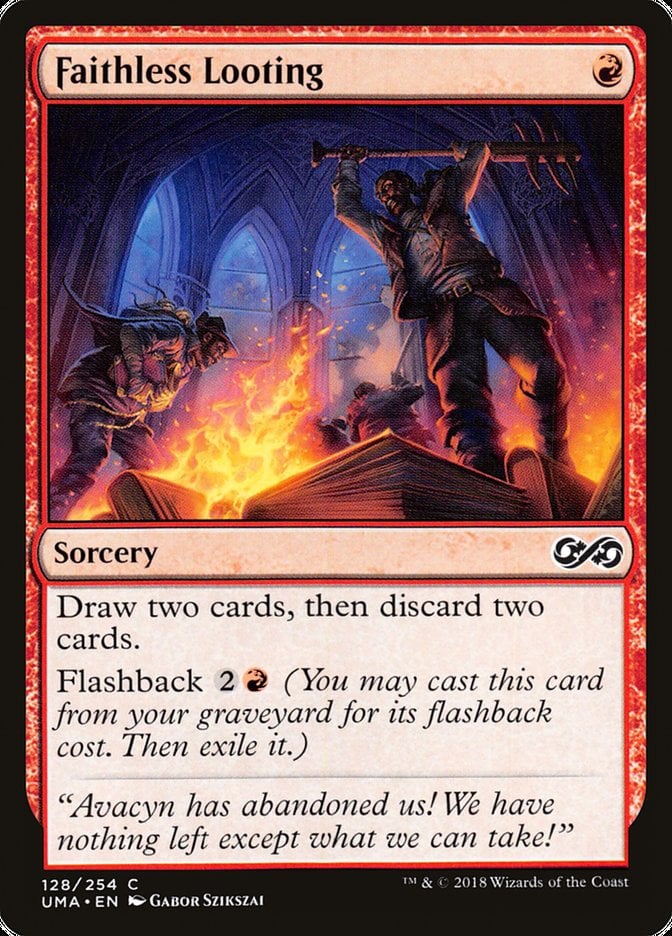

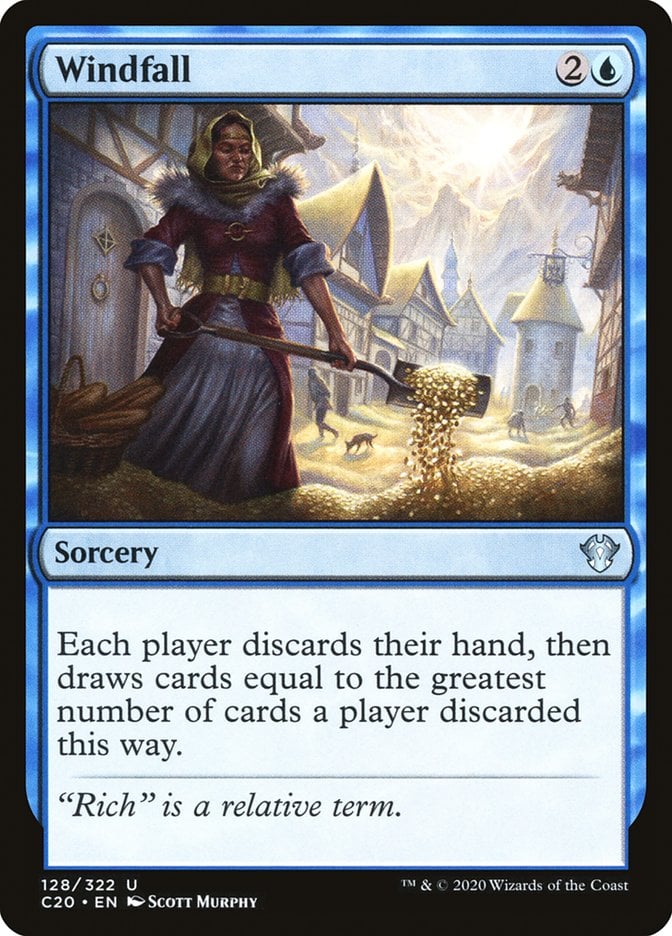



Add Comment